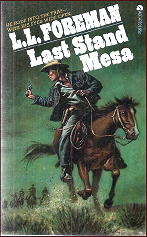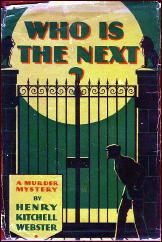REVIEWED BY DAVID VINEYARD:
APPOINTMENT WITH DANGER. Paramount Pictures, 1950. Alan Ladd, Phyllis Calvert, Paul Stewart, Jan Sterling, Jack Webb, Stacy Harris, Henry Morgan, George J. Lewis, David Wolfe. Screenplay by Richard Breen and Warren Duff. Directed by Lewis Allen.
“You don’t have to build up to a murder, one good try and you’re there.â€

This exceptionally well done procedural noir set against the background of a post office investigation stars Alan Ladd as postal inspector Al Goddard, a tough no-nonsense investigator with a heart of lead, who is plunged into a dangerous undercover assignment when nun Sister Augustine (Phyllis Calvert) witnesses two killers, Joe Regas and George Soderquist (Jack Webb and Henry Morgan) dump the body of Post Office investigator Harry Gruber in an alley in La Porte, Indiana.
The case expands as Goddard has to track down the nun and once he finds her, find the man she saw and spoke to in the dark alley, Soderquist. That’s complicated because Goddard begins to have human feeling about the nun and when Regas, who fears she saw him, tries to kill her, he starts to take things personally.
Meanwhile, following the late Gruber’s lead, Ladd is led to Paul Ferrer (Stacy Harris), a Post Office truck driver, and a heist planned by Earl Boetticher (Paul Stewart) a hotel owner, Regas, and a team hoping to exploit a million dollar hole in Post Office security during a transfer of funds in Gary, Indiana. While still searching for Soderquist, who Regas has killed in the meantime, Ladd goes undercover hoping to nail the gang for Gruber’s murder or catch them in the act.

Jan Sterling has a nice bit as Boetticher’s none too loyal girlfriend, Dodie: “You can put strings on good women or bad women, but you can’t put strings on lazy women.†She is at once slightly off key, a little dopey, and too smart for the men around her.
Goddard (listening to music with her in her room): So that’s ‘Slow Train to Memphis?’
Dodie (standing near him with a lazy sway: Hmm-mmm. You like it.â€
Goddard (taking her in his arms): It’s already given me a lift.
As the deadline for the heist closes Goddard finds himself suddenly alone and one complication after another closing his door to get out alive including when Regas, obsessed that the nun saw him, kidnaps Sister Augustine.
Regas: You look as if you lost your best friend.
Goddard: I’m my best friend.
Regas: That’s what I mean.

This is the one, of course, where future Dragnet team Webb and Morgan play a pair of killers. Morgan’s fairly short-lived as a simple minded type who Webb kills with a pair of brass booties, all he has left of the son he hasn’t seen since infancy: “Why’d you do that Joe, I thought you liked me?†he asks just before Webb finishes him off.
You may find yourself having to suppress and inappropriate laugh at one point when Webb impersonates a cop to lure Calvert into his car, but it isn’t the fault of the film. It doesn’t help he’s named Joe either.
Well-acted all around, with Ladd, Stewart, Sterling, Webb, and in a short bit, Morgan outstanding, a sharp script by Richard Breen and Warren Duff, good location shooting and set pieces (the scene in the handball court is often copied and expanded on), and solid if straight forward direction by Lewis Allen, Appointment With Danger, is a tough smart noir film that lets Ladd humanize believably during the course of the film without getting too sticky or sentimental. There is more than enough suspense, and Sterling has a great final scene any film noir femme fatale would kill for, as an unsentimental survivor.
It’s not top noir, but it is well above average and moves smoothly and smartly, with good dialogue to keep the thing lubricated.

